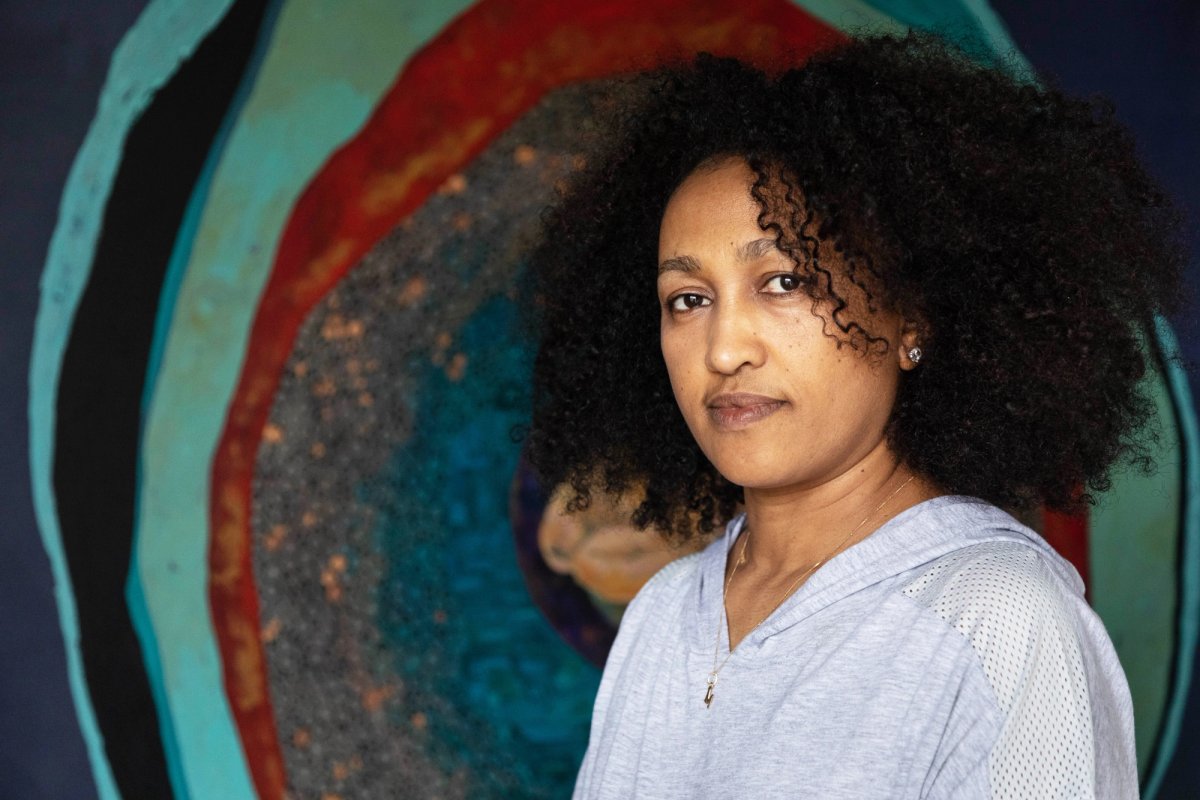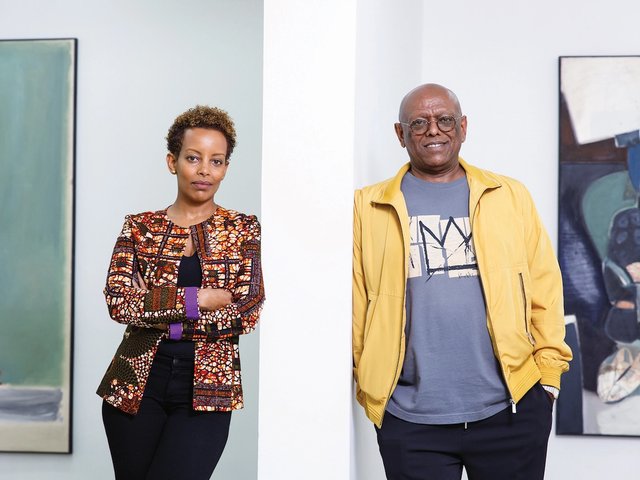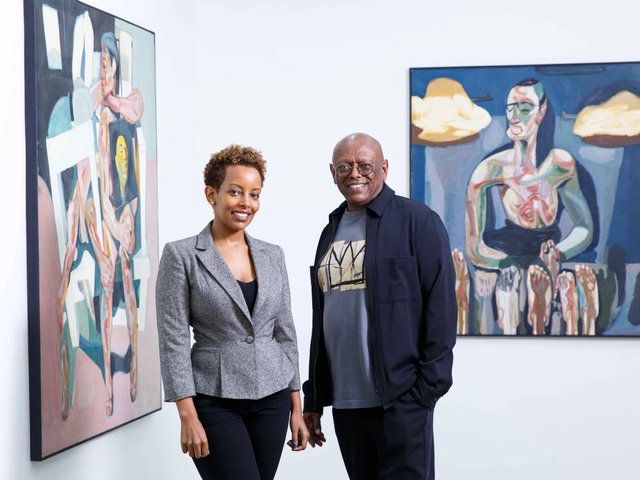It is one of the great quandaries for smaller and mid-sized galleries. You've spent years working with an artist, but when you feel they need a bigger platform than you can provide, how do you help them progress to the next level without losing them to a mega-gallery forever?
Such was the question facing Rakeb Sile and Mesai Haileleul—who co-founded Addis Fine Art in Addis Ababa in 2016—following the inclusion of Merikokeb Berhanu, an artist they have represented since 2017, in the 2022 Venice Biennale.
Born in Ethiopia in 1977, Berhanu graduated in 2002 from the Alle School of Fine Arts and Design in Addis Ababa, where she studied under Ethiopian Modernist painters such as Tadesse Mesfin. The influence such artists had on Behranu—who still lives and works in Addis Ababa—is palpable in her vibrant semi-abstracted paintings, which focus on the tense rift and disconnect between nature and technology.
Berhanu’s appearance at the Biennale drew further international attention and it was at this point that Addis Fine Art started looking for collaborators to grow her international career and collector base. Various galleries interested in working with Berhanu got in touch, but it was Esther Schipper, who has galleries in Berlin, Paris and Seoul, and the New York-based dealer James Cohan who seemed the best fit. Today (28 March), the three galleries announced their joint representation of Berhanu.
“There are a few artists that we look after who have reached the limit of what we can do for them on our own, and Meri is one of them,” Sile tells The Art Newspaper. Addis gave the artist her first show in Addis Ababa. Since then, Sile says, the gallery has sold her work into around 15 international institutional collections, including the Tate. Berhanu is now one of “a subset of artists with whom we need to collaborate with bigger galleries in a meaningful way,” Sile says. “This is our first proper collaboration, but it will be, we hope, one of many.”

Merikokeb Berhanu, Untitled XCIX (2025)
© Merikokeb Berhanu, courtesy of the artist, Addis Fine Art, and Esther Schipper, Berlin, Paris, Seoul. Photo: Dawn Whitmore
Sile describes Addis Fine Art’s role going forward as that of an artist liaison. “The personal relationship that we've built, combined with our cultural understanding, is really valuable for Meri and her career,” Sile says. “We've brokered the relationship [with Schipper and Cohan] so that Meri feels comfortable with the energy and the way the galleries work. It’s a nice group of people—everybody believes in Meri so much and we just want to ensure she gets the recognition she deserves.”
Global reach was important in choosing collaborators, Sile says. “James Cohan is such an expert in the US market, so we know that he's going to be able to really push institutional sales within the US. He's done that for so many of his artists, including [the Ethiopian artist] Elias Sime. And Esther has such a wide European network, but also an Asian network, because of the gallery in Seoul.”
From now on, while Addis Fine Art will remain a representative of Berhanu and sell occasional paintings, Schipper and Cohan will take on the lion’s share of the artist’s work, with Schipper presenting its first solo exhibition of her work during Gallery Weekend Berlin in May before a show of new works open at one of James Cohan’s New York spaces in October.
Schipper says she has long admired Berhanu’s painting “for its beauty and intelligence”. She continues: “Merikokeb was an important artistic position in our painting exhibition Twilight is a Place of Promise in 2024, and I am delighted to present a solo presentation of her work during the Gallery Weekend Berlin. It is a wonderful opportunity to introduce Merikokeb’s work to a wider European audience.” Meanwhile, Cohan says Berhanu's work “reflects on a unique blend of cultural specificity and an intertwined language of abstraction. We are honoured to be working together."
In a crowded gallery-eat-gallery world, the subject of shared representation is a sensitive one, with many artists and galleries reluctant to talk about the practicalities of these sometimes fragile relationships, such as how works are distributed. The industry, as Sile says, is lop-sided and being a small gallery that wants to remain niche while not being trampled by bigger players is particularly difficult.
“This is a tough industry, it can be very brutal and people are always competing with each other,” Sile says. “In football, for example, if a player leaves a club, the new club would have to pay [the old one off]. But when an artist leaves or gets poached from a smaller gallery, there's not even a dime [that comes] back. If smaller galleries lose one or two of their bigger artists, that's it, you are out of business. And then, what? It's just so bad for the industry, it’s bad for culture—if you lose the investment engine of any industry, it becomes boring and narrow. We need niche galleries to survive, or we will see nothing new.”




